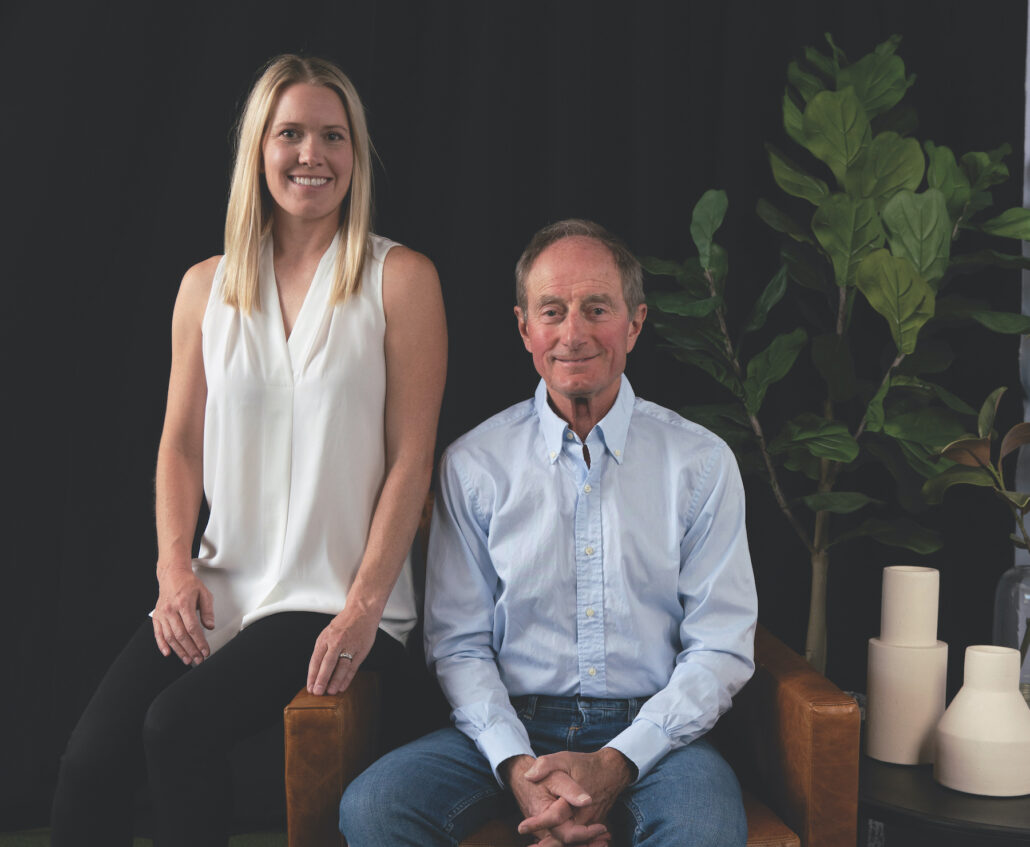
A history of adaptive sports in Park City
Making the outdoors accessible to everyone
Winter/Spring 22-23
Written By: Michael Heil | Images: Deborah Dekoff and courtesy National Ability Center
When Tracy Meier scored an internship in therapeutic recreation at the National Ability Center (NAC) in 2002, she found herself in a bustling city that was busy welcoming the 2002 Winter Olympic and Paralympic Games.
That fateful winter, through her work at the NAC, Tracy also met her future husband, Monte. “It was my second day in Park City,” Tracy says. “Monte was competing in the Huntsman Cup, preparing for the 2002 Paralympics. I saw him racing, and not knowing much about Paralympic sports, I was kind of wowed and in awe.”
“I said hi to him and after that, I just made sure I was in the right place at the right time,” she says with a sheepish smile. Before long, the couple were married and now have three children.
Tracy, who originally thought she’d be in Park City for a few months, has been working at the NAC for over 20 years and is now the director of programs and education. Monte, who is a right-leg amputee and three-track skier, competed in five Paralympics, bringing home four medals before retiring.
“People from all over the world train here at the NAC,” Tracy says. “We don’t just train those who want to become professional athletes, but anyone who wants to get out and participate in outdoor activities. Ultimately, it’s the lifelong benefits of being outdoors and recreating that are so impactful.”
The NAC endeavors to make the mountains and all the recreational delights they offer accessible to people from every ability level and every walk of life. “It’s about life change and empowerment,” Tracy says.
Since adaptive ski gear can cost up to $15,000 per piece of equipment, a lot of people never get the chance to try skiing. The NAC provides not only the gear, but also the specialized instructors needed to teach someone how to use it. “All you need to do is register and pay the fees. If someone can’t afford programming, the NAC will provide a scholarship,” Tracy explains. “In the 20 years I’ve been with the NAC no one has ever been turned away due to the inability to pay.” Moreover, those who join gain a family, a community, a place to belong.

“We’re hoping to break down stereotypes, discrimination, and barriers for people with disabilities. Our programs create an inclusive community. We often have local youth and community members volunteer with us. We’re all just doing a sport together. Just because we do things differently doesn’t matter. It’s okay for us to be different. It’s okay for us to ask questions. It’s really about treating people like people — with dignity and respect,” says Tracy.
Sometimes participants have a mental health diagnosis, multiple sclerosis, or cerebral palsy. Others are missing one or more limbs, are blind, have a spinal cord injury, or have autism. And every year, a group of young adults who are battling cancer come to enjoy the NAC’s programs and activities.
“Whether you’re standing up, sitting down, one leg, one arm, you’re still sliding on snow, and that’s what we care about. Sometimes independence means three people helping you and sometimes it means ripping it up by yourself,” she says. “We get calls frequently where people say, ‘We were a skiing family, and our family member was born with, or acquired this disability. Do you think we can ever ski together as a family again?’”
“My favorite answer is, Yes!’” Tracy says with a beaming smile. “It may require a whole lot of duct tape, padding, and creative thinking, but we can get anybody out there. That’s our job!”

Before the first piece of adaptive gear was developed in the late 1940s, skiing was simply not an option for someone with a disability. “When the gear first came out, it was a sled that went across the snow with little picks that were used to dig in and turn. Now it has developed into these high-tech shocks that absorb through the turns and allow you to ski the trees and the powder and go anywhere else,” says Tracy.
NAC was founded by Meeche White and Pete Badewitz in 1985. Back then, they offered around 45 ski lessons, ran on a budget of $3,500, and operated out of their home. Now, the NAC offers around 4,500 ski lessons and 37,000 lessons in activities like horseback riding, waterskiing, camping, archery, mountain biking, river rafting, and rock climbing. The NAC sits on a 26-acre ranch in the heart of Park City and has an annual budget of over $8 million to work with.
This year the NAC broke ground on what will be the McGrath Family Mountain Center, a 9,600-square-foot ski and snowboard facility on a plot of premium land that was gifted to the NAC by Park City Mountain. It should be completed by the fall of 2023.
After 20 years of working at the NAC, Tracy’s eyes still light up as she talks about the people that she serves and the memories they create together. “There is a lot of ‘ick’ in the world,” Tracy says, “and I see this as a place of good. … Being here means bringing some light into the world.”

